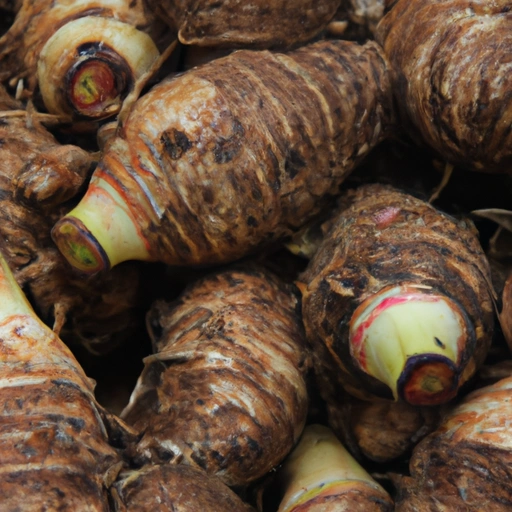Taro
Description

Taro, also known as Colocasia esculenta, is a starchy root vegetable originally from Southeast Asia and Southern India. It's a staple food in many parts of the world and is known for its nutty flavor and potato-like texture. When using taro in recipes, it is often weighed in pounds (lbs) or kilograms (kg), and measured in cups (US) or milliliters (ml) and liters (l) for European recipes.
Common uses
Taro is commonly used in a plethora of sweet and savory dishes. It can be boiled, baked, fried, or steamed and is often made into taro chips, added to stews, or used to make dessert pastes.
Nutritional value
Calories
One cup (about 132 grams) of cooked taro provides roughly 187 calories (or about 783 kilojoules).
Protein
Each serving contains approximately 0.5 grams of protein, an essential macronutrient for body repair and growth.
Fat
Taro is low in fat, with around 0.1 grams per serving, making it a heart-healthy choice.
Carbohydrates
It is rich in carbohydrates, with about 45 grams per serving, which provides energy for daily activities.
Vitamins
Taro is a good source of vitamins, particularly Vitamin E and Vitamin C, needed for immune function and skin health.
Minerals
It is also rich in minerals such as potassium and magnesium, vital for heart health and muscle function.
Health benefits
Consuming taro can contribute to overall health due to its high fiber content, which aids digestion, and its antioxidants, which help combat free radicals.
Potential risks
Raw taro contains calcium oxalate, which can lead to kidney stones and skin irritation if not prepared properly. Always cook taro thoroughly before consumption to minimize risks.
Common recipes
Popular recipes include taro bubble tea, poi in Hawaiian cuisine, and taro root curry in Indian dishes.
Cooking methods
Taro can be roasted, boiled, or mashed. In some cultures, it's also pounded into a paste or used to make flatbreads.
Pairing with other ingredients
Taro pairs well with coconut milk, sweeteners like honey or sugar, and spices such as cinnamon or nutmeg.
Summary
Taro is a versatile and nutritious ingredient with a long history of cultivation around the world. It's an excellent source of fiber and essential nutrients and can be prepared in various ways to suit both sweet and savory dishes. However, proper preparation is key to avoiding its potential risks.